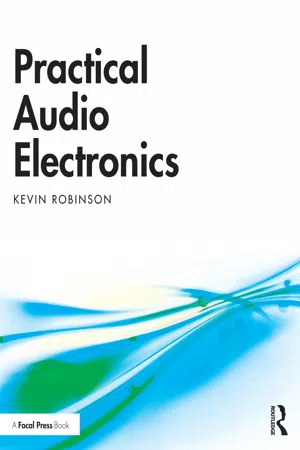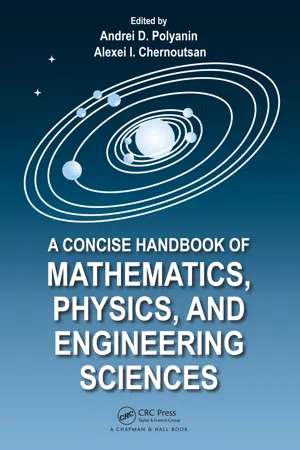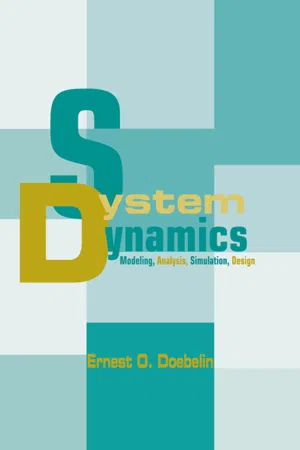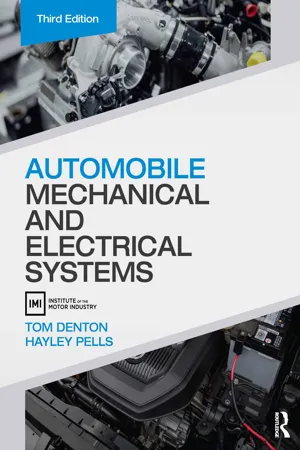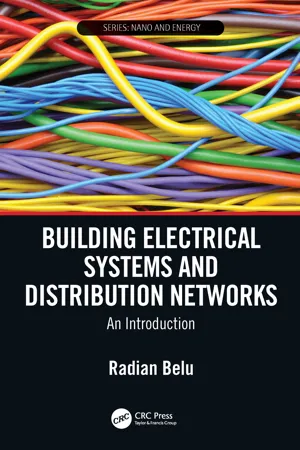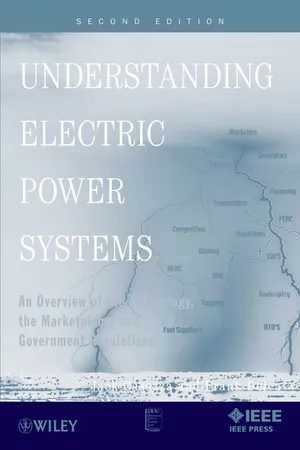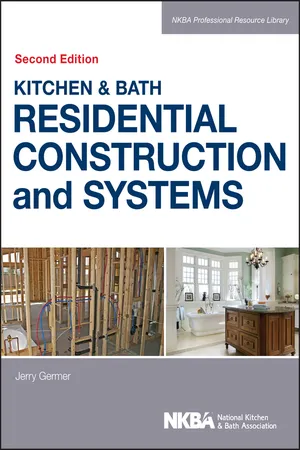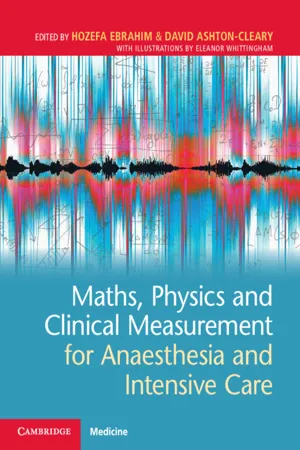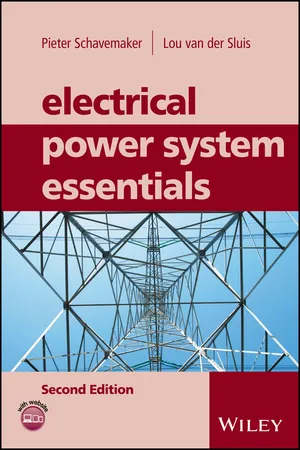Physics
Electrical Systems
Electrical systems involve the study and application of electrical circuits, components, and devices. They encompass the flow of electric current, voltage, resistance, and power within various systems. Understanding electrical systems is crucial for analyzing and designing electronic devices, power distribution networks, and communication systems.
Written by Perlego with AI-assistance
Related key terms
1 of 5
12 Key excerpts on "Electrical Systems"
- eBook - PDF
- Kevin Robinson(Author)
- 2020(Publication Date)
- Focal Press(Publisher)
Part I Electrical Theory 2 | Electricity Ke.scy.sc Co.scn.scc.sce.scp.sct.scs.sc i.scn.sc El.sce.scc.sct.scr.sci.scc.sci.sct.scy.sc This chapter introduces a number of key concepts. In so doing it provides a solid framework for the development of an understanding of the behaviour of electronic components and electrical circuits. In keeping with the stated aims of the book to avoid unnecessary levels of detail, the topics discussed here are presented in a relatively broad fashion, with the goal of facilitating a sufficient degree of understanding to guide the practical electronics to come. The technically inclined reader has at their disposal many more rigorous, academic textbooks to choose from if a deeper treatment is sought (see for example Horowitz and Hill, 2015; Sedra and Smith, 2014). The primary goal in this brief chapter is to provide a description of the importance of, and the relationships between, the following key concepts: Electric Charge – positively and negatively charged particles are the basis of electricity Static and Current Electricity – charge can accumulate (static) or it can flow (current) Current and Circuits – a loop or circuit is generally needed in order for current to flow Direct and Alternating Current – the flow of current can be one way or bidirectional Voltage – the push that causes current to flow (voltage up → current up) Resistance – the opposition to the flow of current (resistance up → current down) Power – when current flows through a circuit work is done, dissipating power Electricity and Magnetism – the two mutually dependant aspects of electromagnetism Conductors and Insulators – materials through which current can and can not flow Electricity deals with the accumulation and movement of charged particles. Two of the key constituents of all matter are positively charged particles called protons, and negatively charged particles called electrons. - Andrei D. Polyanin, Alexei Chernoutsan(Authors)
- 2010(Publication Date)
- CRC Press(Publisher)
Chapter E6 Electrical Engineering E6.1. Generalities E6.1.1. Introduction. Basic Notions, Definitions, and Notation ◮ Preliminary remarks. Electrical engineering is a technical science studying physical phenomena related to directed motion of charged particles in conducting media at the level of macroprocesses and the problems of practical use of such phenomena. Electrical engineering is traditionally divided into the following fields: foundations of circuit theory, foundations of magnetic circuits, electric devices and transformers, electric machines, and foundations of electronics. The basic notions of electrical engineering coincide with similar notions in the course of physics. Electrical engineering employs the following physical quantities in the sense explained below. ◮ Notions, definitions, and notation. The potential is the work done by electric forces to transfer the unit charge from a given point in space, in particular, a given point of the circuit to the point at infinity (the zero potential point). The potential is denoted by the symbol ϕ and is measured in volts (V). The potential can be determined for a given point in space (circuit) with respect to the zero potential. The voltage ( potential difference ) is the work done by electric forces to transfer the unit charge from a point in space (circuit) to another point. The voltage is also measured in volts (V) and denoted by the symbol U . The voltage can be determined only between two points in space (circuit). The current strength ( current ) is the electric charge passing through the conductor transverse cross-section per unit time. The current strength is measured in amperes (A) and is denoted by I . The current strength can be determined for a given element of the electric circuit. The electromotive force (EMF) is the work done by forces of nonelectrostatical nature (extraneous forces) to transfer the unit charge from a point in space (circuit) to another point.- eBook - ePub
- DeLean Tolbert Smith, Aishwary Pawar, Nicole P. Pitterson, Debra-Ann C. Butler(Authors)
- 2022(Publication Date)
- Visible Ink Press(Publisher)
•Develop and use computer systems •Maintain electronic equipment •Prepare operational plans •Project management •Design systems for efficient and reliable operations •Identify and solve engineering design problems •Use Autodesk and AutoCAD specifically for electrical control systems •Be proficient in MATLAB •Have knowledge of raw materials, quality control, techniques, and production processesWhat tools do electrical engineers use?•Frequency calibrators and simulators •Laboratory evaporators and safety furnaces •Oscilloscopes •Scanning probe microscopes •Voltmeters or multimeters •Semiconductor process systems (for example: electron beam evaporators, wafer steppers, and wire bonders) •Signal generators •Calculators •Spectrometers •Tube furnaces •Voltage or current meters •ElectrodesELECTRICITY CONCEPTSWhat is electricity?Electricity is the physical manifestation of or a form of energy that often results from charged particles’ existence and interaction. Electricity occurs when charged particles move between positive and negative regions within a conductor.Today, electricity is widely used to power everything from small personal devices, such as cell phones, to entire cities. In the world around us, electricity is a natural occurrence and can be observed in lighting. A well-known experiment was conducted by Benjamin Franklin, who went flying his kite during a thunderstorm in 1752. Using a kite with some conductive materials (e.g., copper) and nonconductive strings (e.g., silk), Franklin discovered that lighting was electrical discharge.What is the difference between static electricity and current electricity?Static electricity develops on the substance’s surface. It is generated by friction or instant interaction of negative charges from one object to another such as rubbing two materials against each other. Static electricity occurs on objects isolated by an insulator when a buildup of opposite charges occurs. - Available until 9 Apr |Learn more
- Carlos A. Smith, Scott W. Campbell(Authors)
- 2016(Publication Date)
- CRC Press(Publisher)
379 10 Electrical Systems This chapter focuses on Electrical Systems. Some terms, variables, and units are first defined and discussed. The chapter then follows the same organization as in previous chapters in that it looks at the laws used, as well as the electrical components necessary to develop the models. The reader is encouraged to read and study Chapter 11, where several simulations of examples of this chapter are presented. 10.1 Some Definitions and Conventions The letter q denotes an electrical charge , and its unit is the coulomb, C; 6.25 × 10 18 electrons form a charge of 1 C. Current is the rate of flow of electrical charges, dq / dt ; the letter i denotes current and its unit is the ampere, A, so 1 A = 1 C/s. By convention, current is positive if it flows from positive to negative polarity. (Note: Although current is defined as a flow of electrons—negative charges—in reality, electrons move from negative to positive polarity. It is only by convention that current is defined as moving from positive to negative polarity; we refer to this current as conventional current .) We have seen in previous chapters that the potential, or gradient, necessary for fluid flow is a difference in pressure, Δ P , and for heat transfer is a difference in temperature, Δ T . That is, Δ P is what makes a fluid flow, and Δ T is what makes heat flow. A difference in electrical potential or voltage drop is what makes electrical charges flow (current). The let-ter E denotes electrical potential at a point in a circuit with respect to a reference point ( E comes from EMF, which stands for electromotive force). The letter v denotes a difference in electrical potential (voltage drop) across an electrical component, that is, v = Δ E = E in – E out . The unit of electrical potential is the volt, V, which is potential energy per unit charge, or 1 V = 1 joule/coulomb. In the sections that follow, two different electrical sources are used. - eBook - PDF
System Dynamics
Modeling, Analysis, Simulation, Design
- Ernest Doebelin(Author)
- 1998(Publication Date)
- CRC Press(Publisher)
3 SYSTEM ELEMENTS, ELECTRICAL 3-1 INTRODUCTION It is difficult to think of any technological systems of medium or large scale which do not involve electricity in some way. If, however, we restrict our consideration to cases in which system functions are performed largely by electrical means the following examples might come to mind: I. Electrical power transmission and distribution 2. Communications (cable, radio, television, microwave, etc.) 3. General-purpose computers 4. Electro-optics (optoelectronics?) (lasers, fiber optics, imaging systems, etc.) Application areas which, in general, are electromechanical, electrothermal, electro-mechano-acoustic, etc., but which might in specific cases be largely electrical include: I. Measurement systems 2. Control systems We described mechanical elements in terms of their force/motion relations. The electrical components or elements of this chapter will be described in terms of their voltage/current relations. To dispel some incorrect but common word usage, note that an electric motor is not an electrical device but rather an electromechanical one, since its description requires specification of not just voltage/current relations but also force/motion relations. The useful aspect of an electric motor is that it can perform mechanical work. Similarly, a phototransistor (transistor sensitive to light) is an electro-optical device, since its description involves voltage, current, and light flux. A loudspeaker would be an electro-mechano-acoustic device while a micro-phone would be acousto-mechano-electrical. Such mixed-media devices are ex-tremely important in many systems, but since they are not strictly electrical we do not include them in this chapter. Some of the more important ones will be treated briefly in Chap. - eBook - ePub
- Tom Denton, Hayley Pells(Authors)
- 2022(Publication Date)
- Routledge(Publisher)
3 Electrical SystemsDOI: 10.1201/9781003299066-33.1 Electrical and electronic principles
3.1.1 Electrical fundamentals
To understand electricity properly we must start by finding out what it really is. This means we must think very small. The molecule is the smallest part of matter that can be recognized as that particular matter. Subdivision of the molecule results in atoms. The atom is a basic unit of matter and consists of a central nucleus made up of protons and neutrons. Around this nucleus electrons are in orbit, like planets around the sun. The neutron is a very small part of the nucleus. It has an equal positive and negative charge. It is therefore neutral and has no polarity. The proton is another small part of the nucleus. It is positively charged. As the neutron is neutral and the proton is positively charged, this means the nucleus of the atom is positively charged.Figure3.1Basic representation of an atomThe electron is an even smaller part of the atom, and is negatively charged. It is held in orbit around the nucleus by the attraction of a positively charged proton. When atoms are in a balanced state the number of electrons orbiting the nucleus equals the number of protons. The atoms of some materials have electrons that are easily detached from the parent atom and join an adjacent atom. In so doing they move an electron (like polarities repel) from this atom to a third atom and so on through the material. These are called free electrons.Materials are called conductors if the electrons can move easily. However, in some materials it is difficult to move the electrons. These materials are called insulators.If an electrical pressure (voltage) is applied to a conductor, a directional movement of electrons will take place. There are two conditions for electrons to flow: a pressure source, e.g. from a battery or generator, and a complete conducting path for the electrons to move, e.g. wires. - eBook - ePub
Building Electrical Systems and Distribution Networks
An Introduction
- Radian Belu(Author)
- 2020(Publication Date)
- CRC Press(Publisher)
2 Review of Electric Circuits and Power System Basics2.1INTRODUCTION TO ELECTRIC CIRCUIT REVIEW
The study of electric circuits covers the fundamental phenomenon of electric charge carrier flows. The fundamental quantities of current and voltage are used to describe how rapidly charged particles move in a circuit and in what way they do so in the circuit. Current is sometimes referred to as the “through” quantity and voltage as the “across” quantity. In a physical context, current is the flow of electric charge through a component or apparatus, whereas voltage is the potential difference between two points in a circuit. Current flows from high potential to low potential. In particular, we define the current, i(t), flowing in a component or apparatus as the amount of charge passing through that component or apparatus per unit of time. Denoting charge by q(t), we may write current i(t) as:i ( t ) =d q ( t )d t(2.1) Two other important quantities frequently used to describe physical systems are power and energy. If a small quantity of electric charge Δq is displaced from a point A to a point B, then the change in its potential energy, or the work done, is equal to V·Δq, where V is the voltage between A and B. The amount of work done per unit of time, the time rate, is called power, and is usually denoted by P, defined as:P =limΔ t → 0= VV ⋅ Δ qΔ td qd t(2.2) Current unit is the ampere (A), for the voltage is volt (V), for the energy is joule (J), and for the power is watt (W). Prefixes are often used to emphasize the significant figures when these magnitudes are too large or too small. Common engineering prefixes and their corresponding multipliers are given in Table 2.1 - eBook - ePub
Understanding Electric Power Systems
An Overview of the Technology, the Marketplace, and Government Regulations
- Frank Delea, Jack Casazza(Authors)
- 2011(Publication Date)
- Wiley-IEEE Press(Publisher)
3 BASIC ELECTRIC POWER CONCEPTSThis chapter describes as simply as possible the applicable physical laws and concepts needed to understand the physical operation of an electric power system. In Chapter 18, the commercial operation of a system is covered. An attempt has been made to present the material in a nontechnical (i.e., with as few equations as possible) manner.It is important to remember that the operation of an electric power system is governed and described by the laws of physics, which are unchanging, whereas the commercial operations are subject to manmade rules that are subject to modification and change. There is an interrelationship between the two in that the rules established for commercial operations must recognize and respect the physical laws by which the power system operates and the commercial rules often determine the design and operation of the system.A note on terminology is warranted. As the electric utility industry developed, an associated jargon evolved, some of which you have already been exposed to in Chapter 2. In some instances, the words used are simply contractions of longer terms; for example, the use of “amps” in place of “amperes” to describe electrical current. In other instances, a variety of terms are used to describe a single concept; for example, the use of the terms “grid,” “the interconnection,” and “the bulk power system” to describe the totality of all the electric transmission.323.1 ELECTRIC ENERGYEnergy is defined as “the capacity for doing work.” Electricity is but one of many forms of energy. Other familiar forms of, or descriptions of, energy are thermal or heat, light, mechanical, nuclear, and so on. Energy is also described as kinetic—that energy associated with a moving body—and potential energy—that energy associated with an object’s position.For centuries mankind has used energy in its various forms to enhance its standard of living. In many cases, ways have been devised to change energy from one form to another to increase its usefulness. An example, as old as mankind, is the burning of a fuel to produce heat and light. - eBook - PDF
- Charles A. Gross, Thaddeus A. Roppel(Authors)
- 2012(Publication Date)
- CRC Press(Publisher)
Chapter Electrical Circuit Concepts 2 Chapter 2 .1 Charge, Current, Voltage, Power, and Energy . . . . .30 2 .2 Kirchhoff’s Laws . . . . . . . . . . . . . . . . . . . . . . . . . . .33 2 .3 The Ideal Circuit Elements . . . . . . . . . . . . . . . . . . . .36 2 .4 The dc Mode . . . . . . . . . . . . . . . . . . . . . . . . . . . . . . .41 2 .5 The ac Mode . . . . . . . . . . . . . . . . . . . . . . . . . . . . . . .51 2 .6 The Periodic Mode . . . . . . . . . . . . . . . . . . . . . . . . . 64 2 .7 The Transient Mode . . . . . . . . . . . . . . . . . . . . . . . . .75 2 .8 A dc Application: An Automotive Electrical System . . . . . . . . . . . . . . . . . . . . . . . . . . . . . . . . . . . .83 2 .9 An ac Example Application: The U .S . Residential Electrical System . . . . . . . . . . . . . . . . . .92 2 .10 Summary . . . . . . . . . . . . . . . . . . . . . . . . . . . . . . . . .96 References . . . . . . . . . . . . . . . . . . . . . . . . . . . . . . . . . . . . .98 Problems . . . . . . . . . . . . . . . . . . . . . . . . . . . . . . . . . . . . . .98 Fundamentals of Electrical Engineering 30 It is astonishing to realize that we have never written an exactly correct equa-tion on any physical system! And, furthermore, we never will! What engineers do is to create idealized models of physical systems, models to which we can apply the laws of physics in mathematical form, in order to predict ideal sys-tem performance . If we have created “good” models, actual system perfor-mance closely matches that of the ideal . This modeling approach has proved to be remarkably effective, permitting the development of all sorts of products from large modern aircraft to the tiny cell phone and millions of products in between . Still, always bear in mind that there are no perfect models . In the modeling process, we normally create models which focus on those phenomena in which we have an immediate interest . - (Author)
- 2013(Publication Date)
- Wiley(Publisher)
19Electrical SystemsExcept for rustic cabins in the wilderness, all homes depend on electricity to power the equipment, lighting, and a wide assortment of electronic accessories the occupants have come to regard as essential to their lifestyle’so much that any interruption in the flow of power caused by weather-related events results in great inconvenience. However, climate change has made these occurrences more frequent and less predictable, making the reliable delivery of electricity to the home less certain. And, like other energy sources, the cost of electricity is ever increasing, while its production has raised mounting environmental concerns, particularly where coal and nuclear energy sources are used.The production of electrical power by sources outside of the home is beyond the scope of this book. However, homeowners are beginning to produce their own electricity, as we see in this chapter, which also covers the flow of electrical power inside the home and issues designers should be familiar with in the process of designating and specifying equipment and appliances that depend on electricity.Learning Objective 1: Define the terms used to explain electrical current.Learning Objective 2: Describe the elements that comprise household electrical circuits.Learning Objective 3: Recognize the challenges posed by incorporating new Electrical Systems in existing houses.Learning Objective 4: Discuss the possibilities offered by structured wiring and home automation systems.Learning Objective 5: Compare the pros and cons of photovoltaic power to power supplied solely by an electrical utility.ELECTRICITY BASICS
Electrical current is the flow of electrons over conductors. There are two types of current flow. In alternating current (AC) , the type of current used in household wiring, the current changes polarity, or alternates, continually from positive to negative and back again at the rate of 60 times a second. Direct current (DC)- Hozefa Ebrahim, David Ashton-Cleary(Authors)
- 2019(Publication Date)
- Cambridge University Press(Publisher)
Basic Electricity: Voltage, Current and Resistance The word ‘electricity’ is derived from the Greek word for amber – elektron. This was initially used in the seventeenth century as a result of the Greeks noting that when rods of amber were rubbed against certain materials, they could then be used to attract other substances. This was the first recorded observation of static electricity. Although this was the initial usage of the word electricity, the earliest records of electri- city itself actually date back to the Ancient Egyptians, who recorded that certain Nile fish were able to shock wading fishermen. Electricity is a set of physical features that are associ- ated with the presence and flow of charge. The import- ance of electricity to modern, everyday life is self- evident. Electricity is the movement of electrons through conducting materials of which the most obvi- ous group are metals, e.g. copper and aluminium. Protons, found in the nucleus of atoms, are fixed in position in metals; however, the electrons in these con- ductors are free to move. It is this movement of electrons which gives rise to their conducting properties, essential for electricity. The SI unit in respect of electricity is the ampere. This defines electrical current: the flow of elec- tric charge from one point to another. Electrical current is directly analogous to current in a fluid, the water molecules in a river equating to electrons in a copper wire. The faster the flow of water, the stronger the current. Similarly, the faster the movement of electrons down the wire, the higher the electrical current. This can be measured with a galvanometer. A galvanometer is any instrument which transduces current into a mech- anical movement, the most common application being the ammeter, which is used to quantify current. Other applications of galvanometers include steering mechan- isms for lasers, e.g.- eBook - PDF
- Pieter Schavemaker, Lou van der Sluis(Authors)
- 2008(Publication Date)
- Wiley(Publisher)
The EMS is the interface between the operator and the power system, and its fundamentals are outlined in Chapter 6. The electricity market, where all the above treated items meet each other in a commercial sense, is introduced in Chapter 7. The book concludes by questioning the vertical structure of the power system in Chapter 8, when some thoughts on future power systems are offered. The relation between Maxwell’s laws and lumped-element modeling is the topic of the first appendix. The lumped-element models for the power transformer, the synchronous machine, the induction machine, and the overhead lines and underground cables are derived in the other appendices. 44 Introduction to Power System Analysis 2 The Generation of Electric Energy 2.1 INTRODUCTION The power system generates, transports and distributes electric energy economically and reliable to the consumers, with the constraint that both the voltage and frequency are kept constant, within narrow margins, at the load side. Power quality is a major issue these days, a nearly perfect sine wave of constant frequency and amplitude and always available. Electrical engineering started basically with electric power engineering at the turn of the nineteenth century when the revolution in electrical engineering took place. In a rather short period of time the transformer was invented, electric motors and generators were designed and the step from DC to AC transmission was made. Society was completely changed, first by lighting, rapidly followed by the versatile application of electrical power. In this early period, independent operating power companies used different voltage levels and operated their system at various frequencies. Electrical engineers were among the first to realize that international standardiza- tion would become necessary in the modern world. The expansion of the world demand for energy has been met by ever-increasing exploitation of fossil fuels, oil, natural gas and coal.
Index pages curate the most relevant extracts from our library of academic textbooks. They’ve been created using an in-house natural language model (NLM), each adding context and meaning to key research topics.
